Congress Program
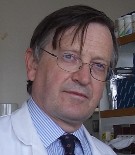
Lysosomes have diverse roles in defense and immunity, cellular nutrition and energy balance as well as
the recycling of critical building blocks for repair and reconstruction. While the lysosome is implicated in
numerous diseases, including those that are acquired, the study of Cell Biology owes much to the inborn
errors of lysosomal metabolism. These disorders continue to attract the most intense gaze and attention:
driven by the need for definitive diagnosis and therapeutic advance, medical research into more than 90
such disorders has also generated prodigious discoveries in Biology.
The close relationship of Cell Science to Medicine has revealed specialized activities of the organelle that
are critical for the development of the senses, resistance to microbial infection (including viruses), and
the recognition of self- and non-self in the innate immune response. Lysosomal metabolism of
endogenous and exogenous nucleic acids is a critical component of a thematic mechanism for the
homeostatic regulation of immunity, prevention of autoimmune activation, and control of the
inflammatory responses.
Here we will trace the intermingled science of the lysosome within medicine – and show that beyond the
classical lysosomal components identified by De Duve, our burgeoning understanding of lysosomal
proteins identified through pathological research by others, can have far-reaching clinical consequences.
Beyond the diseases of the past, we will also survey newly discovered genetic disorders of lysosomal
function, including those that affect membrane trafficking.
Lysosomes occupy a position of commanding importance in Cell Biology but once understood, this
humble genome-deficient organelle is peculiarly susceptible to therapeutic attack. The conceptual links
are so close that every successful treatment reflects not only the triumph of scientific thought in
clinical practice but a true debt of Science to Medicine.

In 1983 when my 4 year old son Brian was diagnosed with Gaucher Disease, we were told he did not have much time to live.
Two weeks and many tears later, my mother contacted the Weitzman Institute and was told that Dr. Roscoe Brady of NIH was the world expert and NIH was 10 minutes from my home.
I left my integrative family medicine practice and went to work gratis in Dr. Brady’s lab.
4 months later, Brian was severely anemic and on the edge of cardiac failure. Dec 22,1983 he was the first person in the world to receive the modified GCase developed in concert by NIH and the fledgling Genzyme Corporation. He was on and off the enzyme for 3 cycles of 7 weeks each and it became clear the enzyme was reversing all of his symptoms.
2 larger trials later, Ceredase was approved by the FDA in 1991. Subsequently, I went to Israel and with Dr. Ari Zimran we got approval.
Back in 1984 my family started the National Gaucher Foundation which supported research and patient education. Subsequently other foundations formed abroad.
Since then, the field of LSD’s has expanded tremendously based on the experience of one child- and seeing that something formerly impossible was indeed possible. Had all the bureaucracy, gold standard insistence, and ponderous regulation in today’s world been in place then, it is difficult to say what would have happened to my 3 (6 kids) with Gaucher and countless others.

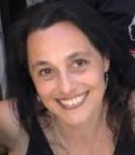

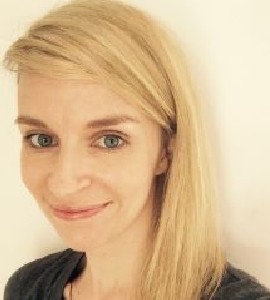

Moderator: Uma Ramaswami, UK
Very Important: Aimee Donald, UK
Overrated: Majdolen Istaiti, Israel
Discussion

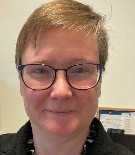
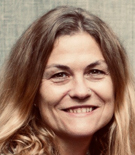
Moderator: Atul Mehta, UK
Very Important: Derralynn Hughes, UK
Very Concerning: Tanya Collin-Histed
Discussion

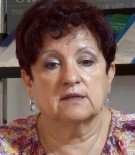

First you should read the NIH definition of a disease for which you want to find a suitable biomarker. For example, sometimes described is an enzyme deficiency that has clear consequences in biochemical pathways in the body (e.g. Fabry, Gaucher). In this case you have to search for defined molecules and hopefully you can find one or more substances that can be useful as biomarkers for diagnosis or prognosis or indicate therapeutic intervention. If this route is out of question an untargeted biomarker search would be necessary. With HPLC-Orbitrap MS you could use a separation and detection system that, under optimised conditions, is able to see about 100.000 signals (=substances) from blood or urine. These signals you can print out as chromatograms e.g. as 1 m/z in the range of e.g. 80 – 1200 m/z (as I do). Usually I compare five cases versus five controls (or ten versus ten) by eye and can find differences between these groups. Then I look deeper and can find an ion like 254.178. The chromatogram with this ion is extracted in all measured patient and control samples. Then the peak area or peak height is compared. Often there is no clear difference for case versus control and you can disregard this ion = signal = substance. But if you are lucky you will find a substance where a huge difference between case and control indeed exists. The next question must be: Does this difference come from the specific disease or was the selection of control samples imperfect (e.g. differences in diet, genetic background, sex, …). More samples often have to be analysed before the magic word “fitting biomarker” can be used.
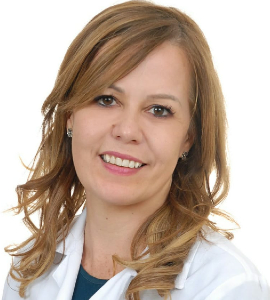


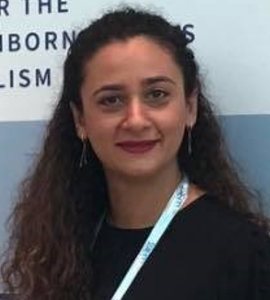


Moderator: Tinatin Tkemaladze, Georgia
Yes: Ni-Chung Lee, Taiwan
The purpose of newborn screening (NBS) is to detect serious but treatable diseases before irreversible damages with cost-effectiveness strategies to save lives and healthcare costs. With recent advancement of multiplex screening technologies and novel treatments for lysosomal storage diseases (LSDs), NBS became feasible. In addition to Pompe, Fabry, and Gaucher disease, more and more laboratories expanded screen conditions to mucopolysaccharidoses (MPS), including MPS I, MPS II, MPS IIIB, MPS IVA, and MPV VI, and even mucolipidosis. Pilot studies demonstrated the feasibility to screen these diseases to prove the evidence-based NBS practices. In this talk, I will review the current evidences that supporting the NBS for LSDs.
No: Shoshana Revel Vilk, Israel
Case Presentations and Discussion
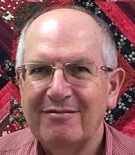


Moderator: Ari Zimran, Israel
Yes: Avner Hershlag, USA
No: Gheona Altarescu, Israel
Discussion/Q&A
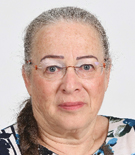
Lysosomal storage disorders result from substrate accumulation, due to decreased activity of lysosomal enzymes. Some of these proteins are recognized as misfolded in the ER, which leads to their retention, to their ER Associated Degradation (ERAD) and to activation of the Unfolded Protein Response (UPR). UPR can be alleviated by chemical or pharmacological chaperones, small molecules, with the ability to cross the blood brain barrier, which facilitate exit of the mutant proteins from the ER, thus allowing their trafficking to the lysosomes. We use Drosophila melanogaster as a platform to assess UPR induced by mutant lysosomal enzymes and to follow the efficacy of chaperones in decreasing the ER stress. We have shown that flies expressing mutant glucocerebrosidase (GCase) variants, defective in Gaucher disease or mutant a-Gal A variants, associated with Fabry disease, in their brain develop neurodegenerative symptoms which can be alleviated by the pharmacological chaperones ambroxol and migalastat, respectively. The chemical chaperone arimoclomol was also able to alleviate the misfolding associated symptoms in flies expressing mutant GCase. We established flies expressing mutant acid sphingomyelinase (ASM) variants, associated with Nieman-Pick types A/B. Interestingly, our analysis showed no significant stress caused by the mutant ASM variants. However, flies expressing the L304P mutation, prevalent among Ashkenazi Jews, shown to be associated with a greater risk to develop Parkinson disease, presented ER misfolding. I will elaborate on the possible association between ER protein misfolding, ER stress and development of Parkinson disease.
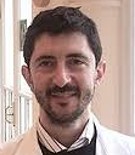
Aggregation of a-synuclein protein in so called “Lewy bodies” and “Lewy neurites” and dopaminergic neuronal loss are the neuropathological hallmarks of Parkinson’s Disease (PD), the most common neurodegenerative movement disorder. Mutations in GBA1, encoding the glucosylceramide-hydrolyzing enzyme glucocerebrosidase, cause Gaucher Disease (GD) and are the most frequent genetic risk factor for PD. The lack of a definitive therapy for PD is largely due to the unavailability of experimental models able to recapitulate fundamental neuropathological signatures of the disease.
The talk is focused on an innovative midbrain organoids (MOs) culture system derived from patients with GBA1-related PD and GD, which represents the first model capable of reproducing several aspects of the human neuropathology. MOs form GBA1-PD patients reproduce insoluble a-synuclein aggregation in inclusions reminiscent of Lewy bodies and Lewy neurites and may be amenable as in vitro platforms for drug testing in GBA-related PD.


The growing evidence on the role of GBA mutations in the pathogenesis of Parkinson disease made it a promising target for the development of disease modifying therapies.
Ambroxol, a small molecule GCase chaperone, has shown promising results in preliminary trials.
In this presentation, we review the results of trials so far, and what new trials are on the horizon.
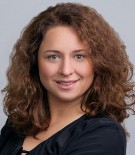

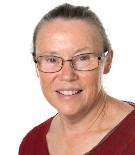
Since 1996, our institution has used Magnetic Resonance Imaging (MRI) for the evaluation of marrow in Gaucher disease (GD) patients for the staging and monitoring of bone marrow infiltration by Gaucher cells and for the assessment of bone complications.
In 2007, we showed that the bone marrow burden (BMB) score is useful in monitoring response of marrow to treatment with Enzyme replacement therapy (ERT) but subsequently published that there was limited intra observer and inter observer agreement between BMB scores.
Quantitative analysis of vertebral bone marrow fat content using Dixon quantitative chemical shift imaging (QCSI) has become the standard measure for GD marrow involvement at some centres and is a sensitive technique for monitoring bone marrow response to ERT but was not available to us.

